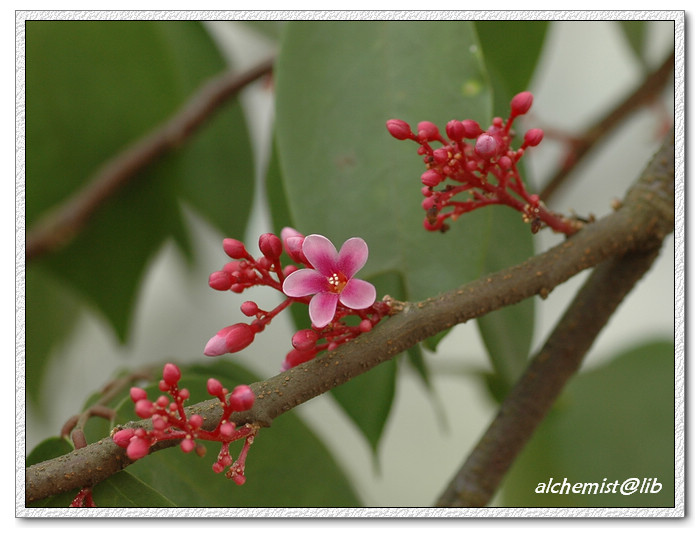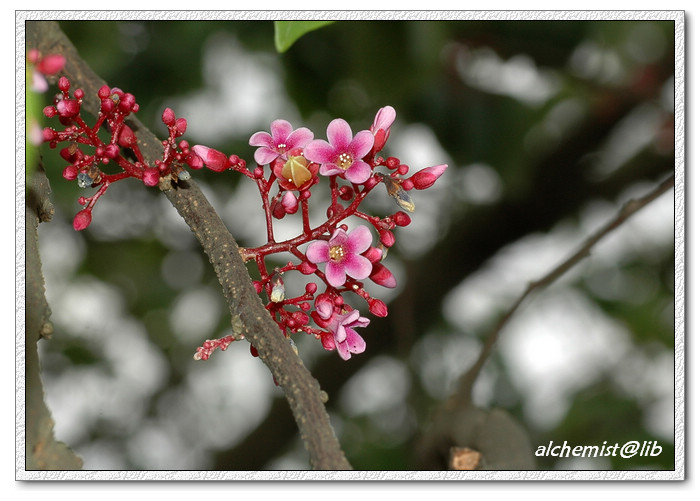阳桃 Averrhoa carambola
- Scientific Name: Averrhoa carambola L.
- Ref: Sp. Pl.: 428. 1753
- Synonyms: Averrhoa acutangula Stokes; Averrhoa pentandra Blanco; Connaropsis philippica Fern.-Vill.; Sarcotheca philippica (Fern.-Vill.) Hallier f.
- English Common Name: star fruit, carambola
- Chinese Common Name: 阳桃 yángtáo, 洋桃 yángtáo, 五敛子 wǔliǎnzǐ
- Japanese Common Name: ゴレンシ [五斂子] gorenshi, スターフルーツ sutāfurūtsu
- Family: Oxalidaceae
- Genus: Averrhoa
- Distribution: Cultivated areas, sometimes escaping to roadsides and secondary open forests; below 1000 m. Fujian, Guangdong, Guangxi, Guizhou, Hainan, Sichuan, Taiwan, Yunnan [native to tropical SE Asia].
- Photo: 06/21/2009, South China Botanical Garden, Guangdong
Plants 3-12(-15) m tall, densely branched, young parts finely pubescent or glabrous. Leaves 7-25 cm; petiole 2-8 cm; leaflets (3-)5-13; petiolules 1-2.5 mm; leaflet blades ovate to elliptic, 3-8 × 1.5-4.5 cm, abaxially pubescent to nearly glabrous, base obliquely rounded, apex acute to acuminate. Inflorescences axillary or rameal, panicles or cymes, branches and flower buds crimson. Flowers numerous, small. Sepals narrowly elliptic, 3-5 mm, base sparingly pubescent. Petals white with purple markings or pink to red with darker markings, 6-9 × 3-4 mm. Shorter stamens sterile, occasionally 1 or 2 fertile. Ovary pubescent. Berry yellow to yellow-brown, oblong, 7-13 × 5-8 cm, deeply (3-)5(or 6)-ribbed, stellate in cross section, very fleshy. Seeds numerous, blackish brown. Fl. Apr-Dec, fr. Jul-Dec. (Flora of China)

06/21/2009, South China Botanical Garden
